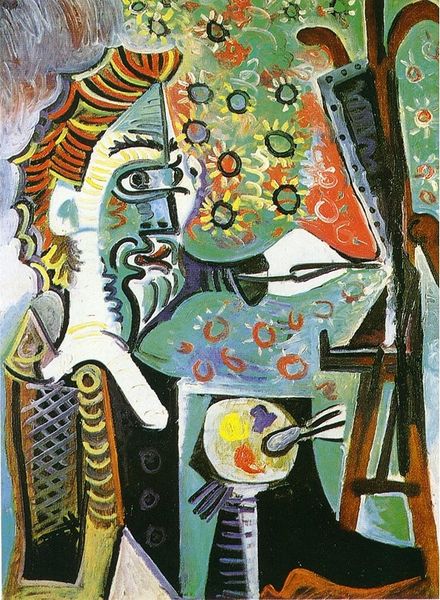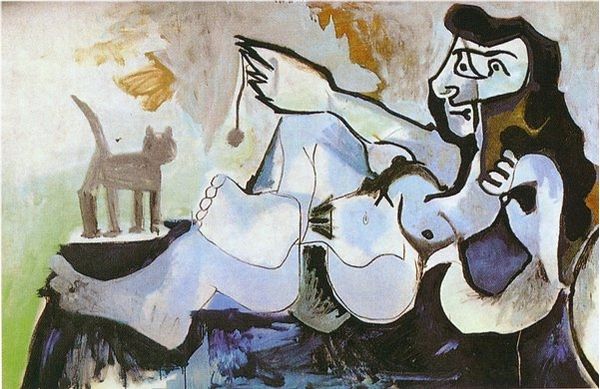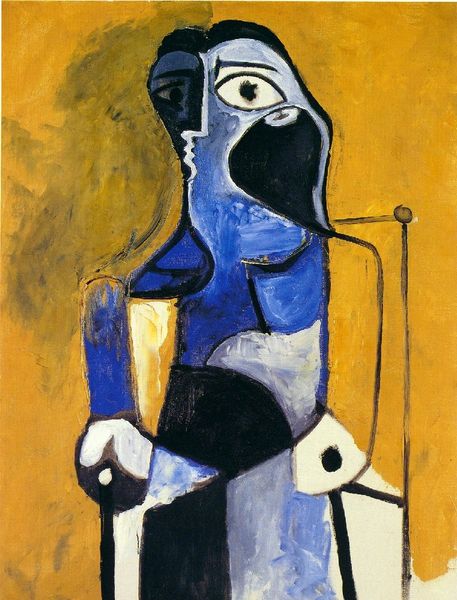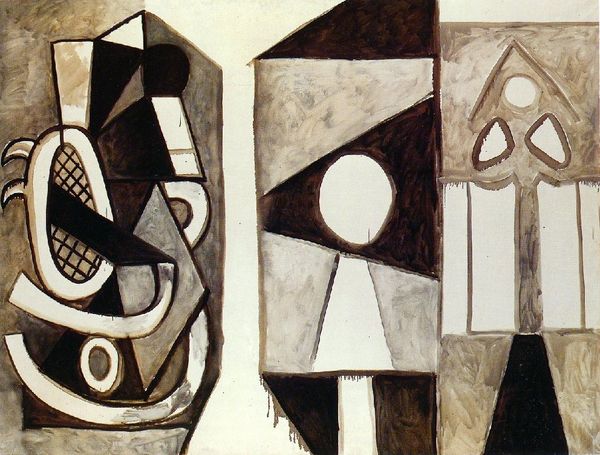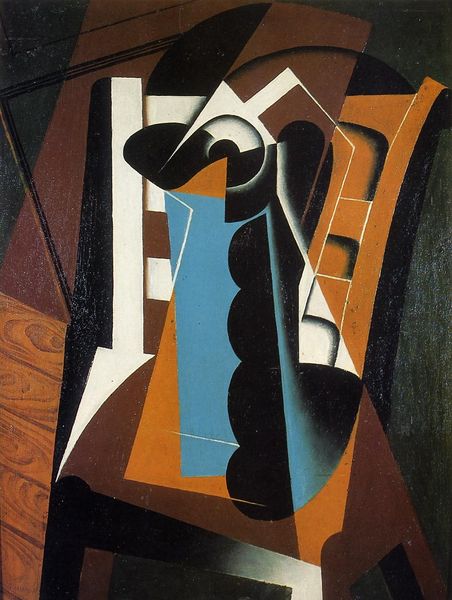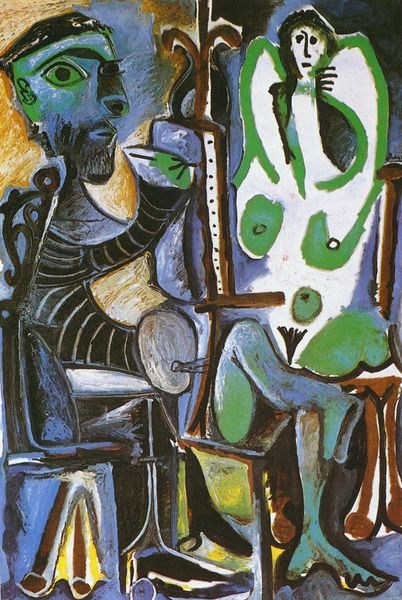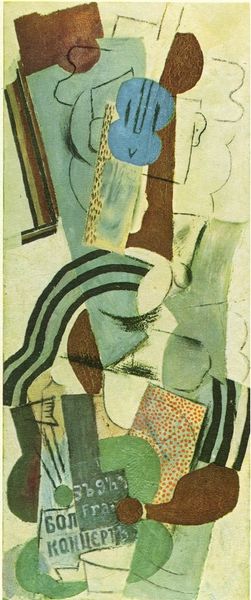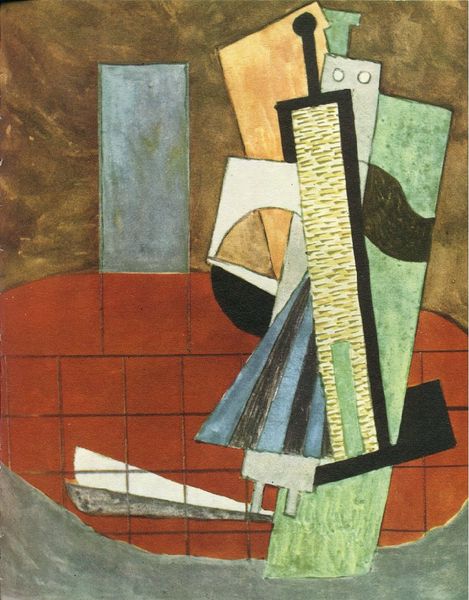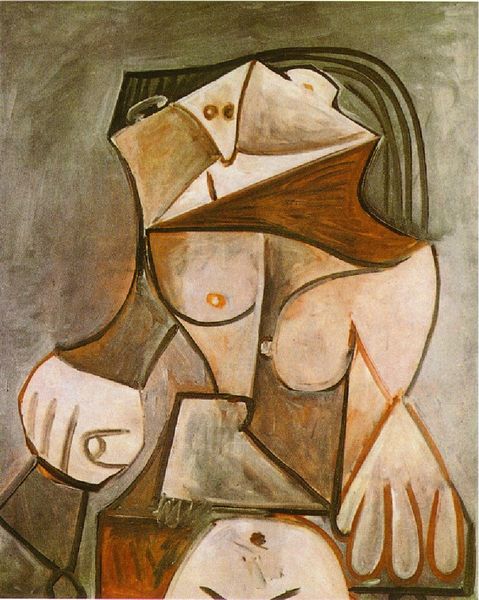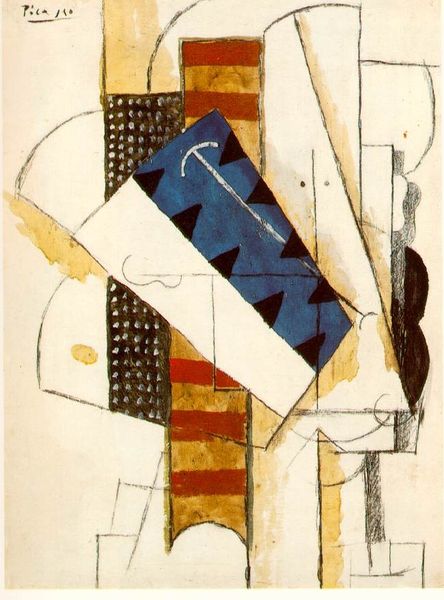
Copyright: Joan Miro,Fair Use
Curator: Right, let's delve into Joan Miró's "Seated Woman II" from 1938. It's an oil painting, and, well, it's quite something to behold. Editor: "Quite something" is an understatement. My immediate reaction is organized chaos! A compelling blend of abstract shapes that coalesce into, yes, something like a seated figure. The dark mass anchors the composition but my eyes are drawn to those whimsical floating elements. Curator: Exactly! Miró was navigating a turbulent time in Europe. Think pre-World War II, and he uses this visual language to explore the anxieties of the period. I see biomorphic forms, shapes suggesting both human and animal qualities… Editor: … and a profound exploration of form itself. The interplay of positive and negative space creates tension and movement. Consider the large black square juxtaposed against the softer, rounded forms, or how that vertical black band bisects the canvas. This introduces dynamic instability and the color choices, grounded yet surreal. It’s as if Miró dislocates and reorganizes conventional visual logic, much as society itself felt then. Curator: It is very society-reflecting. The limited palette—the blacks, whites, oranges, and ochres—heightens the sense of unease, doesn't it? To me, it feels like a dreamscape—or maybe even a nightmare—where familiar forms are distorted and reconfigured. It evokes this sense of subconscious turmoil. Editor: Precisely. It's where dreams meet abstraction, and pure structure dances with implied meaning. Semiotically, it defies easy categorization—refusing fixed symbolism while inviting subjective interpretation. And let's acknowledge Miró's technique here: how he achieves textural contrasts. Curator: True. Knowing what was brewing on the horizon then—the impending war, the rise of authoritarianism—I sense a palpable feeling of impending doom embedded in it. It's in that fragmented composition, that restricted palette. And yet, there's still something playfully resilient. Editor: Resilient indeed, in the way Miró engages—critically and creatively—with pictorial form. It makes a visual argument. Seeing beyond the initial chaos reveals deliberate choices. An insightful artwork that prompts an even deeper consideration, maybe. Curator: I’d call it an echo of history's complexities resonating on canvas still now! Thanks. Editor: Absolutely. A thoughtful observation of then is now ours. Thank you.
Comments
No comments
Be the first to comment and join the conversation on the ultimate creative platform.
